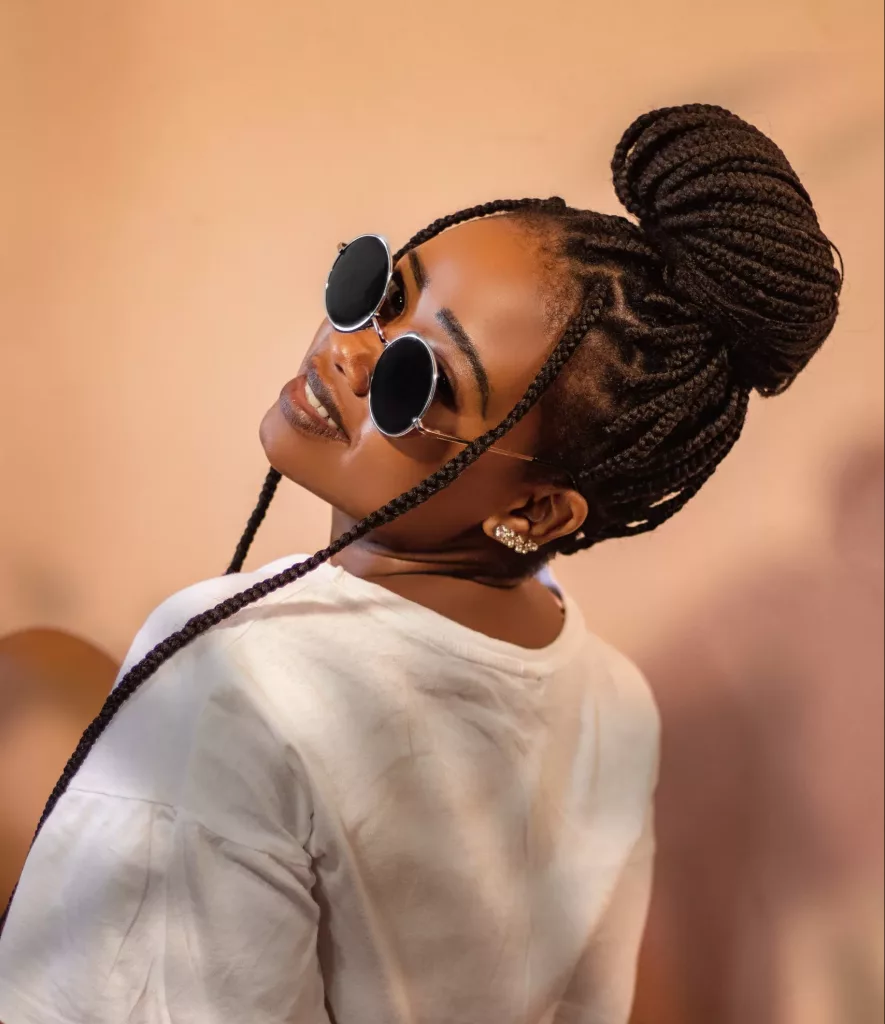A Statement and a practical solution
Hair braiding is an ancient and beautiful art form that has been practiced by cultures worldwide for centuries. Beyond its aesthetic appeal, hair braiding holds significant cultural, historical, and social significance. From traditional techniques to modern adaptations, braided hairstyles offer versatility and creativity.
In addition to their histororical and cultural significance, braid styles are a practical way to style and care for hair. In this article, we explore the significance of hair braiding, various techniques, different ways to incorporate it, and essential tips for caring for braided hair, especially natural hair.
Significance of hair braiding
Hair braiding has deep cultural roots and serves as a means of personal expression and identity. Throughout history, different braiding patterns, styles, and accessories have conveyed cultural heritage, social status, and even spiritual beliefs. Braided hairstyles can be symbolic, representing tribal affiliations, coming-of-age rituals, marriage, or simply individuality. By embracing braiding techniques, individuals honor and preserve the cultural traditions of their ancestors.
Techniques and styles
Hair braiding encompasses a wide range of techniques, from simple three-strand braids to intricate cornrows and complex fishtail braids. Some popular techniques include box braids, Senegalese twists, and Ghana braids, French braids, and Dutch braids. Each technique offers a unique look and requires varying levels of skill and practice. Additionally, braids can be combined with other styling elements like buns, ponytails, or even incorporated into updos to create diverse and stunning hairstyles suitable for any occasion.
Incorporating braids creatively
Braided hair can be incorporated in numerous ways to enhance overall style. For a casual look, a single loose braid or two side braids can add a touch of bohemian charm. For a more formal appearance, an updo with braided elements can provide an elegant and sophisticated look. Braided accents can also be incorporated into half-up hairstyles or mixed with curls for a romantic and whimsical vibe. The possibilities are endless, allowing individuals to experiment and showcase their unique personality.

Tips for caring for braided hair
One of the main advantages of having briads is the longevity of the style. Braids can be kept in for weeks, allowing you to give your hair a chance to rest as well as giving you back some of your time. Proper care is crucial to maintain the health and longevity of braided hair. Here are a few essential tips to consider:
Moisturize, moisturize, moisturize!
We can’t stress this enough. Just because your hair is in braids doesn’t mean it should not be regularly hydrated. Regularly moisturize the scalp and hair by using lightweight oils or leave-in conditioners to prevent dryness and breakage.

Wash gently
Wash braided hair with a gentle sulfate-free shampoo, focusing on the scalp, and avoid excessive manipulation to minimize frizz and maintain the braids’ neatness.
Here’s a tip: if your scalp is itchy but you want to go longest between hair washes, you can clean your scalp with witch hazel toner by dipping a cotton ball in the tonic and dabbing your scalp with it.
Protect at night
Tie hair up in a silk or satin scarf or use a silk pillowcase to minimize friction and prevent the braids from unraveling or frizzing during sleep.
Avoid excessive tension
Ensure braids are not too tight as this can lead to discomfort and hair damage. Excessive tension to the hair follicles is the main cause of traction alopecia. If braids are causing pain, consider loosening them.
Give it a break
After a few weeks, allow your hair to rest by taking out the braids. Use this time to massage your scalp, which encourages your blood to flow to your hair follicles. This rejuvenates your scalp and helps create the ideal condition for your hair to thrive. Give your scalp and hair a break before considering a new braided style.
Let your style shine through!
Hair braiding represents more than just a stylish trend; it carries cultural, historical, and personal significance. From simple braids to intricate styles, the versatility of braided hair allows for endless creativity. By following proper care techniques, you can enjoy the beauty and longevity of your braids while maintaining healthy hair. Embrace the art of hair braiding, and let your unique style shine through this timeless practice.
FAQs
The lifespan of braids depends on the style and how well you care for them. Generally, smaller braids last longer than larger ones. With proper care, braids can last anywhere from 2 weeks to 3 months.
Tie your braids up in a silk or satin scarf or sleep on a silk pillowcase to minimize friction and prevent frizzing.
A dry scalp can cause itchiness. Use a witch hazel toner to cleanse your scalp in between washes. Moisturizing your scalp regularly also helps.
There are many braiding techniques, from simple three-strand braids to intricate cornrows and fishtail braids. Popular styles include box braids, Senegalese twists, Ghana braids, French braids, and Dutch braids.
Related Posts

Nurturing Your Tresses and the Planet: A Guide to Sustainable Hair Care
In an era where environmental consciousness is at the forefront of lifestyle choices, sustainable hair care has emerged as

Texture Revolution: Reflecting on Hair Care Lessons of 2023 and Anticipating Trends in 2024
The year 2023 witnessed a transformative era in textured and curly hair care, marked by a growing understanding of diverse hair types and a surge

Unlock Radiant Hair with Glisen: Your Personalized Guide to Ultimate Hair Care!
Are you drowning in a sea of hair care information, feeling lost amid the constant stream of new and hyped-up
